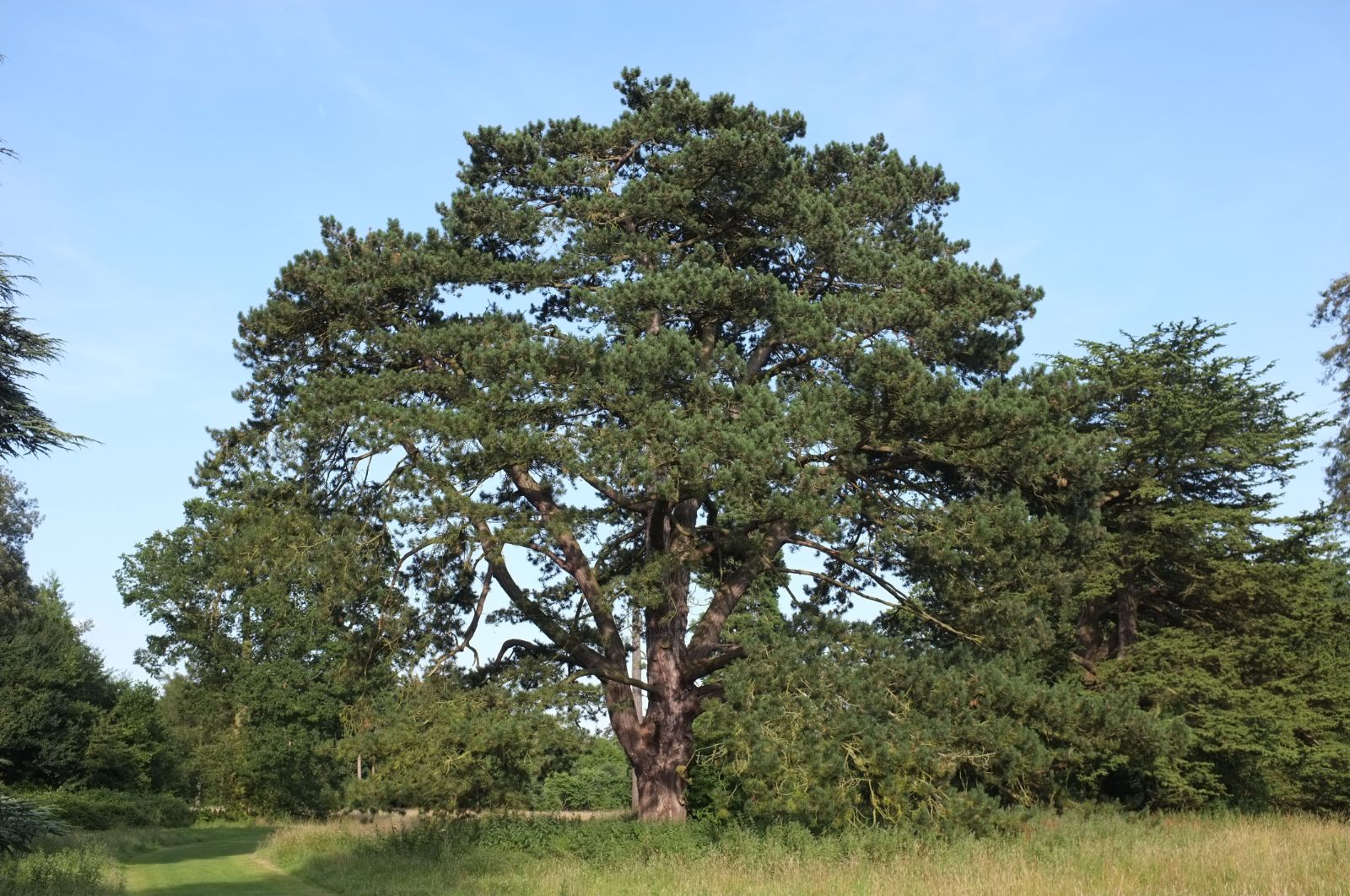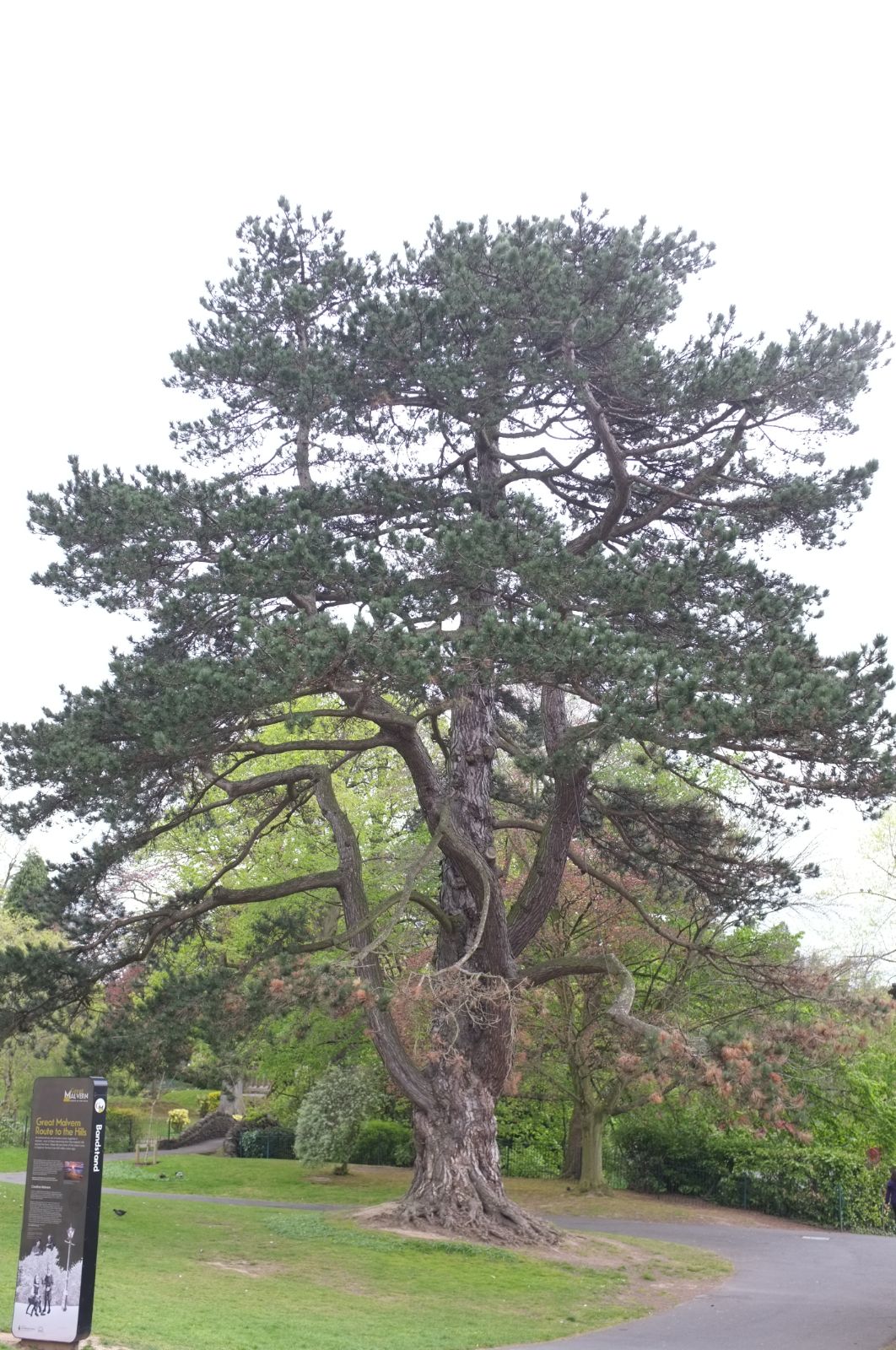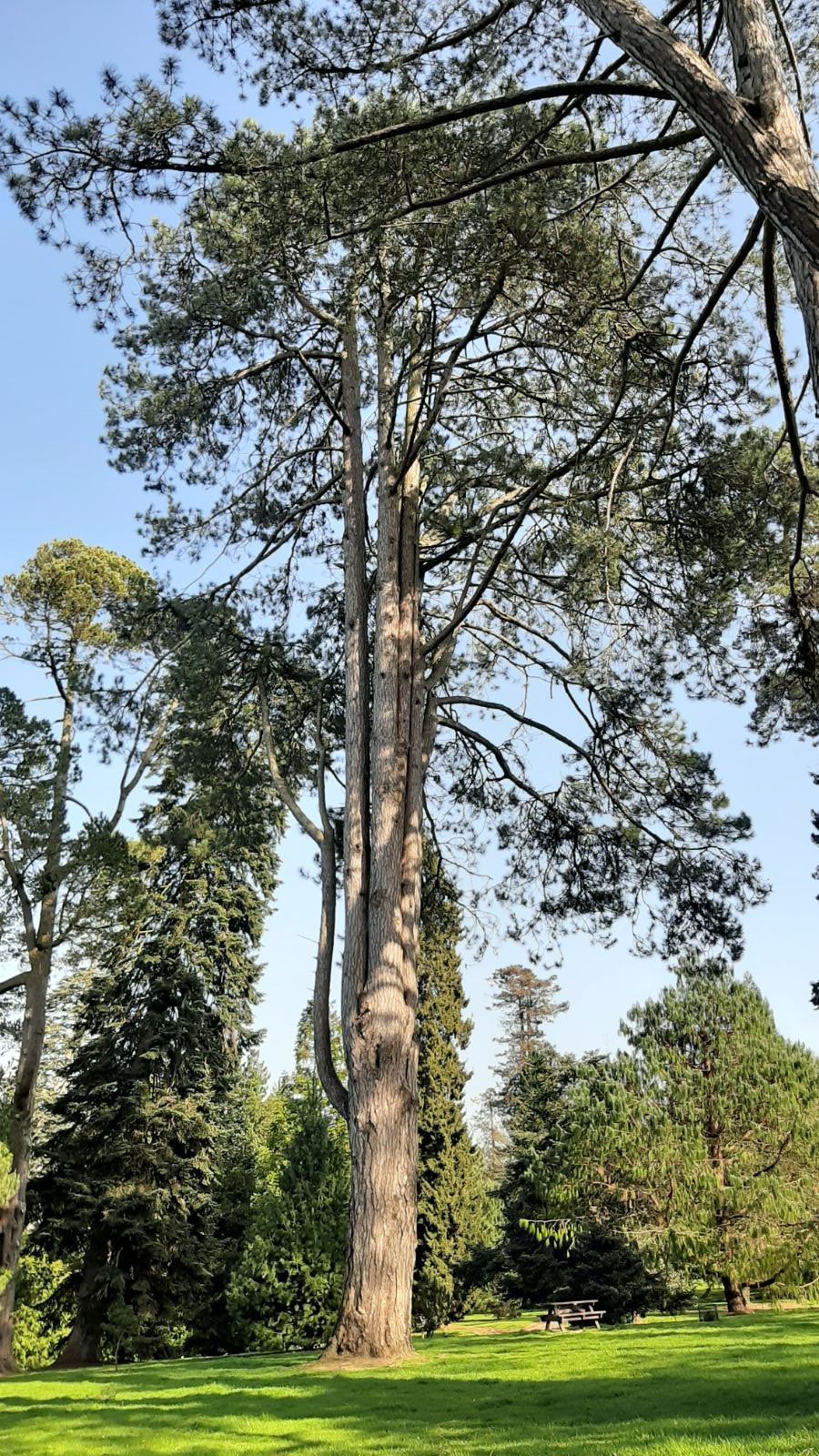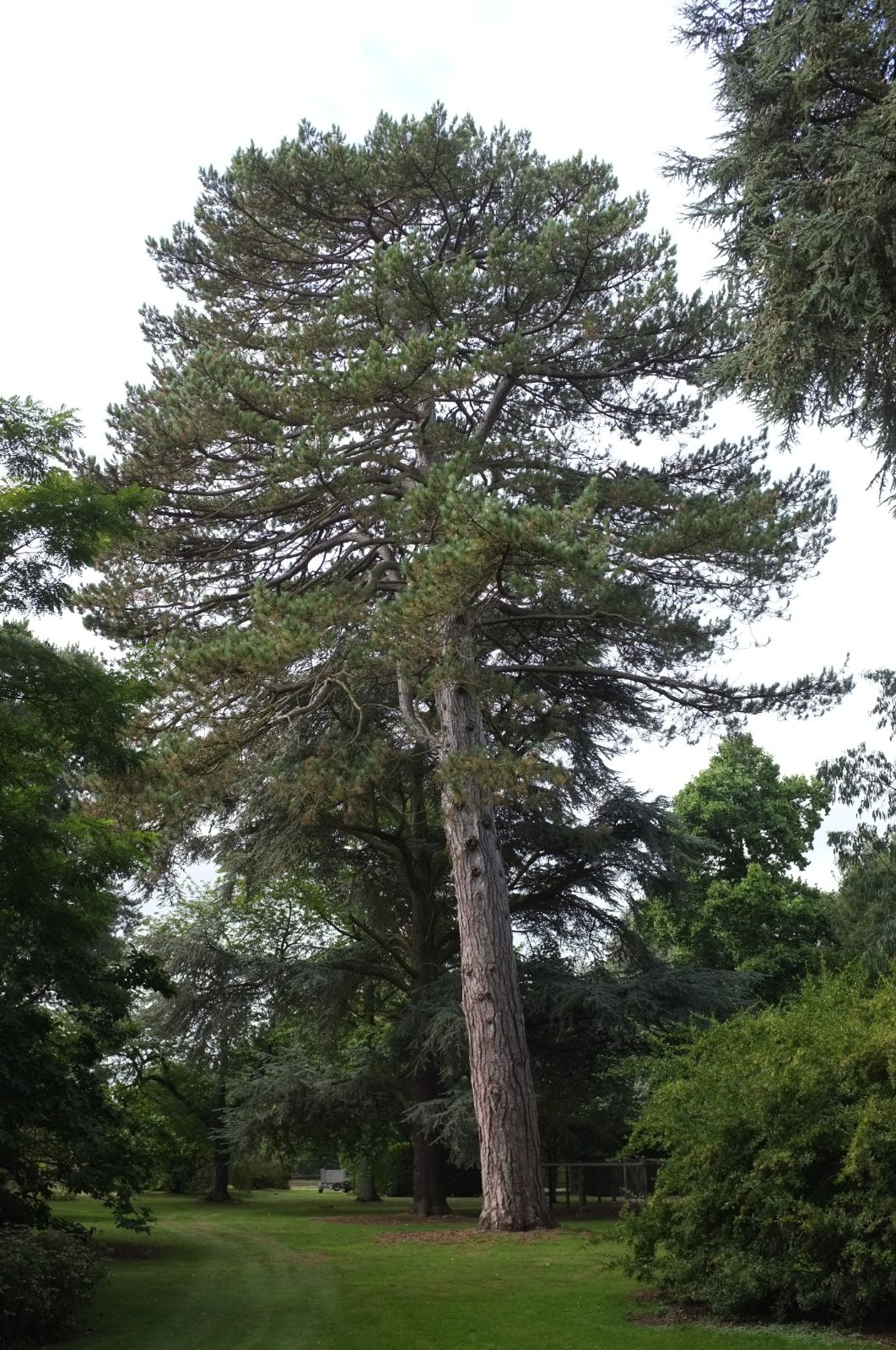Pinus nigra
Credits
Article from Bean's Trees and Shrubs Hardy in the British Isles
Recommended citation
'Pinus nigra' from the website Trees and Shrubs Online (treesandshrubsonline.
Genus
Common Names
- Austrian Pine
Synonyms
- P. austriaca Hoess
- P. nigricans Host
- P. laricio var. austriaca (Hoess) Loud.
- P. laricio var. nigricans (Host) Parl.
Infraspecifics
Other taxa in genus
- Pinus albicaulis
- Pinus arizonica
- Pinus armandii
- Pinus attenuata
- Pinus ayacahuite
- Pinus balfouriana
- Pinus banksiana
- Pinus bhutanica
- Pinus brutia
- Pinus bungeana
- Pinus canariensis
- Pinus cembra
- Pinus cembroides
- Pinus chiapensis
- Pinus contorta
- Pinus coulteri
- Pinus culminicola
- Pinus densata
- Pinus densiflora
- Pinus devoniana
- Pinus durangensis
- Pinus echinata
- Pinus edulis
- Pinus elliottii
- Pinus engelmannii
- Pinus eremitana
- Pinus flexilis
- Pinus gerardiana
- Pinus greggii
- Pinus × hakkodensis
- Pinus halepensis
- Pinus hartwegii
- Pinus heldreichii
- Pinus henryi
- Pinus × holfordiana
- Pinus hwangshanensis
- Pinus jeffreyi
- Pinus johannis
- Pinus koraiensis
- Pinus lambertiana
- Pinus leiophylla
- Pinus longaeva
- Pinus massoniana
- Pinus maximartinezii
- Pinus monophylla
- Pinus montezumae
- Pinus monticola
- Pinus morrisonicola
- Pinus mugo
- Pinus muricata
- Pinus nelsonii
- Pinus oocarpa
- Pinus orizabensis
- Pinus palustris
- Pinus parviflora
- Pinus patula
- Pinus peuce
- Pinus pinaster
- Pinus pinceana
- Pinus pinea
- Pinus ponderosa
- Pinus pseudostrobus
- Pinus pumila
- Pinus pungens
- Pinus quadrifolia
- Pinus radiata
- Pinus remota
- Pinus resinosa
- Pinus rigida
- Pinus roxburghii
- Pinus sabiniana
- Pinus serotina
- Pinus sibirica
- Pinus strobiformis
- Pinus strobus
- Pinus sylvestris
- Pinus tabuliformis
- Pinus taeda
- Pinus taiwanensis
- Pinus teocote
- Pinus thunbergii
- Pinus torreyana
- Pinus virginiana
- Pinus wallichiana
- Pinus wangii
- Pinus yunnanensis
A tree sometimes over 100 ft high in the wild, with a broad crown and a dark, plated bark, young shoots brown when ripe, glabrous; buds brown, slightly resinous, broadly ovoid at the base, narrowed abruptly at the apex to a slender point. Leaves in pairs, 3 to 6 in. long, up to 1⁄12 in. wide, falling in their fourth year, semi-terete, very minutely toothed, dark green, rather rigid; sheath about 1⁄2 in. long. Cones solitary, in pairs or in threes, ripe in their second year and then glossy brown, ovoid-conic or elongate-ovoid, 2 to 3 in. long, scales transversely ridged and sometimes terminated by a short prickle; seeds small, winged.
P. nigra (in the narrow sense as described above) has its northern limit south-west of Vienna, but its main distribution is from Istria and the Julian Alps southward through Yugoslavia to Greece; it has also been reported from a few localities in central and southern Italy. In Dalmatia it reaches to near sea-level on the Pelješac peninsula and on the island of Brač. The nurseryman Lawson of Edinburgh started to import seed of P. nigra in 1835 and two years later was offering one-year seedlings at 10 shillings a thousand.
The Austrian pine is very distinct in general appearance from, and decidedly inferior to, the Corsican pine (see var. maritima below). It has a rougher, shorter trunk, with more numerous branches, and heavier masses of darker green leaves, which on the whole are shorter, stiffer, and straighter than those of the var. maritima. The whole tree has a coarser, heavier aspect. It is very useful for growing on poor chalky soil, and as a shelter tree in bleak situations, especially near the sea. Its value as a timber tree is much less than that of var. maritima.
It appears to be a short-lived tree in cultivation, though the fact that it is so often planted in exposed positions may be the explanation for this. Some noteworthy specimens are: Keir House, Perths., pl. 1851, 75 × 13 ft (1970); Petworth House, Sussex, 112 × 111⁄2 ft (1961); Bicton, Devon, 88 × 131⁄4 ft (1968); Bolderwood, New Forest, Hants, 115 × 123⁄4 ft (1970).
P. nigra in the broad sense is a variable and wide-ranging species, and the typical variety or subspecies, discussed above, is only a segment of it. It is now necessary to turn to the other subdivisions of the species, which are here given in geographical order, from east to west:
From the Supplement (Vol. V)
specimens: Bolderwood, New Forest, Hants, 118 × 121⁄4 ft and 108 × 111⁄2 ft (1979); Oxford Botanic Garden, 80 × 133⁄4 ft (1983); Brocklesby Park, Lincs., 105 × 113⁄4 ft (1977); Althorp, Northants, 102 × 121⁄4 ft (1983); Dawyck, Peebl., 138 × 103⁄4 ft (1985); Keir House, Perths., 85 × 15 ft (1985).
var. caramanica – specimens: Dropmore, Bucks., pl. 1821, 98 × 143⁄4 ft at 3 ft (1982); Cuffnells, Lyndhurst, Hants, 132 × 123⁄4 ft (1980); Bramshott Hall, Hants, 105 × 131⁄4 ft (1983); Bolderwood, New Forest, Hants, 132 × 13 ft (1979); Hollycombe, Liphook, Hants, 100 × 13 ft (1984); Beauport, Sussex, 121 × 171⁄4 ft (1981); Kingston Lacy Nursery, Wimborne, Dorset, 111 × 171⁄2 ft at 3 ft (1983); Mells Park, Som., 111 × 14 ft (1975); Bicton, Devon, 102 × 121⁄4 ft (1977); Leighton Knolls, Shrewsbury, Shrops., 123 × 14 ft (1977); Tyninghame, E. Lothian, 132 × 14 ft (1984); Beaufort, Inv., 135 × 141⁄4 ft (1985).
var. maritima – specimens: Dropmore, Bucks., pl. 1829, 121 × 143⁄4 ft (1982); Warnham Court, Sussex, pl. 1834, 121 × 12 ft (1984); Scotney Castle, Kent, 132 × 93⁄4 ft (1984); Linton Park, Kent, 111 × 123⁄4 ft (1984); Cuffnells, Lyndhurst, Hants, pl. 1856, 130 × 10 ft (1980); Eastnor Castle, Heref., 135 × 121⁄4 ft and 138 × 121⁄4 ft (1984); Coed Coch, Abergele, Gwyn., 130 × 13 ft (1984).
var. cebennensis – specimens: University Botanic Garden, Cambridge, 60 × 81⁄2 ft (1976); National Pinetum, Bedgebury, Kent, pl. 1932, 82 × 53⁄4 ft and 85 × 51⁄2 ft (1983); Nonsuch Park, Epsom, Surrey, 82 × 10 ft (1983); Buscot House, Oxon., 82 × 81⁄4 ft and 105 × 81⁄2 ft (1981); Singleton Abbey, Swansea, 85 × 91⁄2 ft (1982).
† cv. ‘Hornibrookiana’. – This was raised from a witch’s broom found on an Austrian pine in Seneca Park, Rochester, USA and was named in 1932. It makes a small shrub, broader than high. Portrayed in Bull. Alp. Gard. Soc., Vol. 49, p. 134
'Pygmaea'
A slow growing, dense small bush or miniature tree. A plant at Kew attained 8 ft in height in forty years. Described by Carrière in 1855 as P. laricio var. pygmaea. This is not the same as P. laricio var. pygmaea Rauch ex Gordon, discovered on ‘the highest region of Mount Amaro’ and described as completely prostrate with spherical cones ‘smaller than those of Pinus pumilio’. Gordon identified this plant with P. magellensis Schouw, which is a synonym of P. mugo.var. caramanica (Loud.) Rehd.
Common Names
Crimean Pine
Synonyms
P. laricio var. caramanica Loud.
P. caramanica Delamarre
P. pallasiana D. Don
P. nigra subsp. pallasiana (D. Don) Holmboe
P. nigra var. pallasiana (D. Don) Aschers. & Graebn.
P. tatarica Hort.
P. taurica Hort.
This variety or subspecies is not very clearly distinguished from typical P. nigra, but the cones are usually larger – up to 4 in. long. It occurs in Asia Minor, the Caucasus (where it is rare), in the Crimea, in the Balkans, and in the S. Carpathians. It was introduced to Britain around 1790 by Lee and Kennedy, who distributed plants raised from seeds sent from the Crimea by Pallas, a botanist of German origin famous for his explorations of Siberia. A. B. Lambert (who knew Pallas and bought his private herbarium) had two of the original trees in his collection at Boyton, which were heavily branched, ‘the lower branches almost equalling the trunk itself in size’ (Lambert, Descr. Gen. Pinus, 2nd Ed. (1828), Vol. 1, p. 14). This character is shown by old trees in British collections, which may be of Crimean provenance, but it is not a character of the var. caramanica as a whole (Mitchell, p. 224).Some of the oldest specimens of the var. caramanica are: Dropmore, Bucks, pl. 1821, 90 × 14 ft at 3 ft (1970); Bury Hill, Surrey, pl. 1840, 102 × 14{3/4} ft (1971); Cuffnells, Hants, 124 × 12{1/4} ft (1970); Bicton, Devon, 105 × 12 ft (1968).
var. cebennensis (Godr.) Rehd.
Synonyms
P. laricio var. cebennensis Godr.
P. nigra subsp. salzmannii (Dun.) Franco
P. salzmannii Dun.
P. pyrenaica Lapeyr., in part
P. laricio var. pyrenaica (Lapeyr.) Loud., in part
P. monspeliensis Salzm. ex Dun.
P. laricio monspeliensis Hort.
P. laricio var. tenuifolia Parl
This, the westernmost race of P. nigra, is of little importance. It makes a small or medium-sized tree and is best distinguished by its orange shoots and its very slender leaves, only {1/16} in. wide, not pungent at the apex. There is a specimen measuring 72 × 8{1/4} ft (1969) in the University Botanic Garden, Cambridge. A tree in the forest plot at Bedgebury (National Pinetum), pl. 1932, measures 47 × 3{1/4} ft (1965).P. nigra has given rise to only one cultivar of any importance, namely:
var. maritima (Ait.) Melville
Common Names
Corsican Pine
Synonyms
P. sylvestris var. maritima Ait.
P. laricio Poir.
P. nigra subsp. laricio (Poir.) Maire
P. nigra var. calabrica (Loud.) Schneid.
P. laricio var. calabrica Loud.
P. laricio var. corsicana Loud.
P. nigra var. poiretiana (Ant.) Schneid.
P. laricio var. poiretiana Ant.
Crown slender, with short horizontal branches. Leaves more slender than in the Austrian pine and less rigid. At least in cultivated trees, there is also a difference in length, those of the Corsican being up to 6 or 7 in. long, while in the Austrian they do not much exceed 4 in. Cones 2 to 3 in. long, 1 to 1{1/4} in. wide, ovoid-conic, yellowish brown; scales transversely keeled.A native of Calabria in the southern part of the Italian peninsula, of Sicily, and of Corsica; probably also of Algeria, though the trees there are sometimes separated as a distinct variety. The date of introduction is usually given as 1759, though this is simply the date of publication of the seventh edition of Miller’s Dictionary, in which he mentions a cultivated pine which is thought to have been the Corsican. But it was not planted in any quantity until some years after the Napoleonic wars, when seed was distributed by the firm of Vilmorin. Even in France seed was scarce in the 1820s, and many thousands of seedlings of P. sylvestris growing in the Forest of Fontainebleau were worked over to Corsican by grafting in the years 1826–30 (Loudon, Arb. et Frut. Brit., Vol. IV, p. 2130 and p. 2204); some of these trees still exist.In Britain the Corsican pine now ranks as the fourth most important forest tree. Being a native of the Mediterranean region and needing more than average summer warmth, it is not suitable for the cooler and rainier parts of the country. But in south-eastern England it grows excellently on sandy soils, where it is displacing Scots pine. The annual rate of planting is about 4,000 acres. It is also useful for afforesting sand-dunes, being resistant to salt winds. It does not transplant well if allowed to remain more than two years in one spot, and should be put in when less than 1 ft high.Some of the most notable specimens of the Corsican pine are: Dropmore, Bucks, pl. 1829, 120 × 14 ft (1970); Warnham Court, Sussex, pl. 1834, 100 × 11 ft (1971); Albury Park, Surrey, 110 × 12{1/4} ft(1966); Cuffnells, Hants, pl. 1856, 130 × 10 ft (1970); Stanage Park, Glos., pl. 1828, 144 × 11 ft (1970); Arley Castle, Worcs., pl. 1820, 125 × 14{1/4} ft (1961); Mells Park, Som., 125 × 13{1/4} ft (1962); near Llanfachreth, Merion., 70 × 15{1/2} ft (1968).The following measurements indicate rate of growth in the south-east: National Pinetum, Bedgebury, pl. 1926, 61 × 6 ft (1969); Dropmore, Bucks, pl. 1929, 61 × 5 ft (1970).















